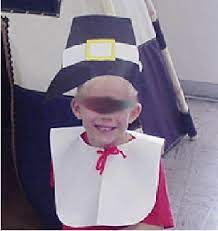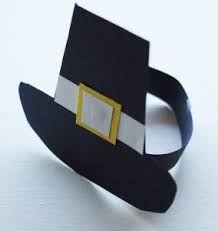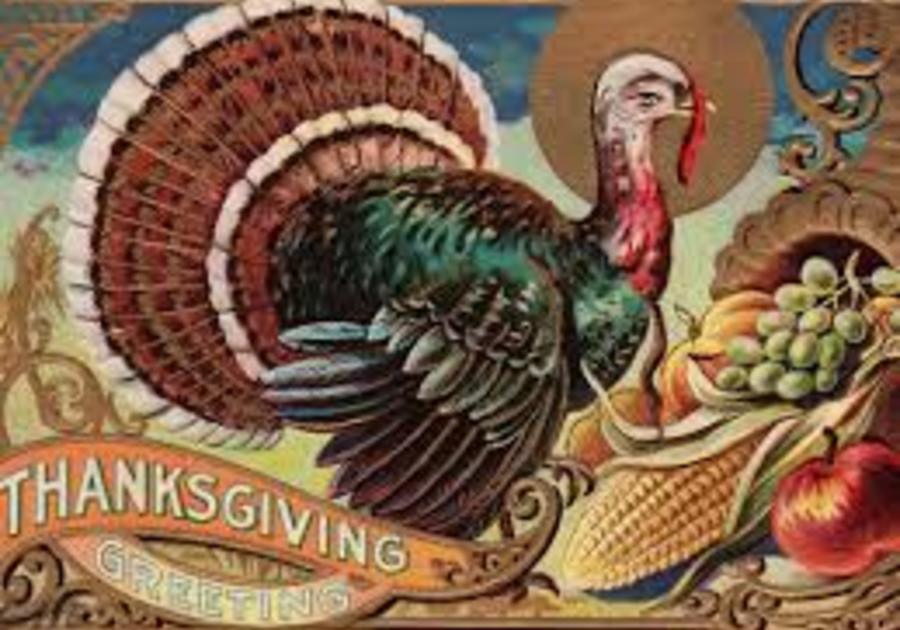Thanksgiving always falls on the fourth Thursday in November and to most of us, it is the official start of the Holiday Season. Celebrating is different for everyone as some families put up their Christmas tree and decorations, turn on the outside lights for the first time or just spend the day feasting on a turkey dinner with all the trimmings and pumpkin pie while enjoying the company of family and friends. For many, the day starts with watching the Macy's Thanksgiving Day Parade with it's larger than life characters. For those who can still move around after their feast, it isn't over until they've done their late day/night shopping for the best Black Friday Deals.
When I was a kid, all I knew about Thanksgiving is that it had something to do with the Pilgrims coming to Plymouth Rock on the Mayflower. In school we would have a Thanksgiving pageant of sorts where the boys would wear Pilgrim hats made out of black construction paper and the girls wore the white bonnet. We all wore the big white collars that all Pilgrims wore and we would sing songs and parade through the halls of the school. This was always on the last day of school before the four day break for the holiday. I don't think they do much of this nowadays but if you'd like to make these with your kids, click here for instructions on how to make your own costume pieces.

 .
.
Thanksgiving wasn't always like this of course. I have a few historical facts here about Thanksgiving and how it came about, courtesy of History.com. You can read the full article here.
The following is just some of the information from the article mentioned above.
~" In 1621, the Plymouth colonists and Wampanoag Native Americans shared an autumn harvest feast that is acknowledged today as one of the first Thanksgiving celebrations in the colonies. For more than two centuries, days of thanksgiving were celebrated by individual colonies and states. It wasn’t until 1863, in the midst of the Civil War, that President Abraham Lincoln proclaimed a national Thanksgiving Day to be held each November.
In September 1620, a small ship called the Mayflower left Plymouth, England, carrying 102 passengers—an assortment of religious separatists seeking a new home where they could freely practice their faith and other individuals lured by the promise of prosperity and land ownership in the New World. After a treacherous and uncomfortable crossing that lasted 66 days, they dropped anchor near the tip of Cape Cod, far north of their intended destination at the mouth of the Hudson River. One month later, the Mayflower crossed Massachusetts Bay, where the Pilgrims, as they are now commonly known, began the work of establishing a village at Plymouth.
Pilgrims held their second Thanksgiving celebration in 1623 to mark the end of a long drought that had threatened the year’s harvest and prompted Governor Bradford to call for a religious fast. Days of fasting and thanksgiving on an annual or occasional basis became common practice in other New England settlements as well.
In 1827, the noted magazine editor and prolific writer Sarah Josepha Hale—author, among countless other things, of the nursery rhyme “Mary Had a Little Lamb”—launched a campaign to establish Thanksgiving as a national holiday. For 36 years, she published numerous editorials and sent scores of letters to governors, senators, presidents and other politicians, earning her the nickname the “Mother of Thanksgiving.”
Abraham Lincoln finally heeded her request in 1863, at the height of the Civil War, in a proclamation entreating all Americans to ask God to “commend to his tender care all those who have become widows, orphans, mourners or sufferers in the lamentable civil strife” and to “heal the wounds of the nation.” He scheduled Thanksgiving for the final Thursday in November, and it was celebrated on that day every year until 1939, when Franklin D. Roosevelt moved the holiday up a week in an attempt to spur retail sales during the Great Depression. Roosevelt’s plan, known derisively as Franksgiving, was met with passionate opposition, and in 1941 the president reluctantly signed a bill making Thanksgiving the fourth Thursday in November."
I hope you enjoy the read and Happy Thanksgiving!



